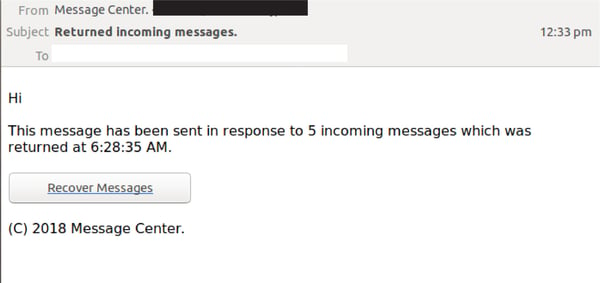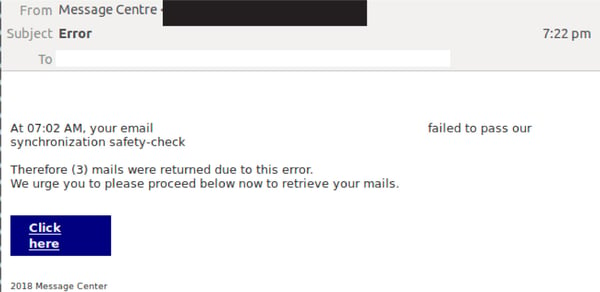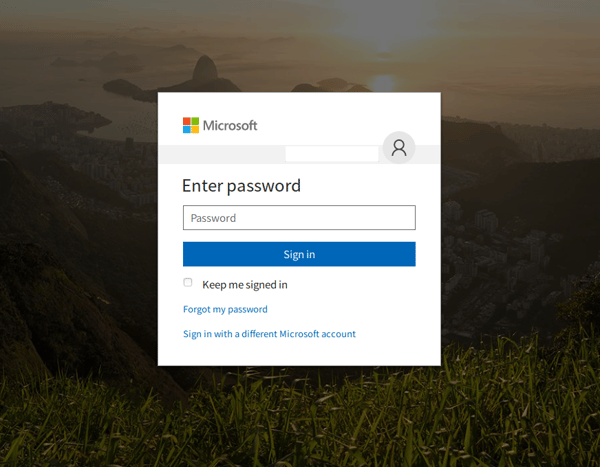Do not be too quick to click everything in your inbox. Cybercriminals circulated two different variations of a malicious phishing email on Tuesday afternoon (AEST).
Using a display name of "Message Center" or "Message Centre", the emails actually come from 2 different compromised accounts.
Both types of emails advise the recipient that their incoming messages are being ‘returned’ due to a problem. To retrieve those messages, they are encouraged to click on a link.
The screenshots of the emails are below:


Unsuspecting recipients who click on the provided link are led to a convincing-looking copy of the Office 365 login page, as per the screenshot below:

Cyber-criminals frequently exploit the branding of global companies like Microsoft in their scams, because their good reputation lulls victims into a false sense of security. Because of the large number of users globally, Office 365 is a regular victim of these scams.
While the phishing page of this particular scam is well designed and looks like a legitimate one from Office 365, the email in itself contains several tell-tale signs that commonly belong to fraudulent emails. These include grammatical errors (such as ‘messages which was rejected’), as well as the fact that the name of the addressee was not included within the body of the email.
Phishing continues to be one of the most prevalent forms of cyber-crime. The vast majority of online scams - more than 90% - are perpetrated using email, so it’s wise to always be skeptical of messages from unfamiliar senders asking you to log into your accounts.
Phishing attacks can be enormously costly and destructive, and new scams are appearing every week. Don’t wait until it happens to your business; protect your business and your staff from financial and reputational damage, now.
Tell-tale signs of phishing scams
- A sense of urgency
- Bad grammar or misuse of punctuation and poor-quality or distorted graphics
- An instruction to click a link to perform an action (hover over them to see where you’re really being directed)
- Obscure sending addresses (for example, Hotmail, gmail, Yahoo addresses should set alarms bells ringing)
For a few dollars per staff member per month, add MailGuard's cloud-based email and web filtering solution to your business security. You’ll significantly reduce the risk of new variants of malicious email from entering your network. Talk to an expert at MailGuard today about your company's cybersecurity needs: expert@mailguard.com.au
Keep up to date on the latest email scams by subscribing to MailGuard’s weekly update, or follow us on Twitter @MailGuard.







